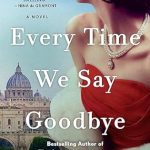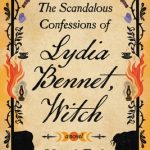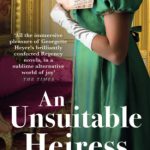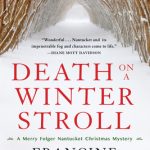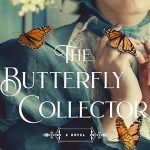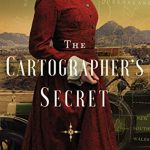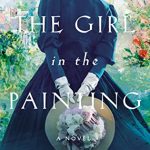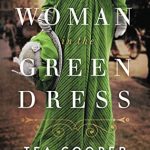 The Naturalist's Daughter by Tea Cooper
The Naturalist's Daughter by Tea Cooper Format: eARC
Source: supplied by publisher via NetGalley
Formats available: paperback, ebook, audiobook
Genres: historical fiction, historical mystery
Pages: 368
Published by Harper Muse on August 20, 2024
Purchasing Info: Author's Website, Publisher's Website, Amazon, Barnes & Noble, Kobo, Bookshop.org, Better World Books
Goodreads
1808 Agnes Banks, NSW
Rose Winton wants nothing more than to work with her father, eminent naturalist Charles Winton, on his groundbreaking study of the platypus. Not only does she love him with all her heart, but the discoveries they have made could turn the scientific world on its head. When Charles is unable to make the long sea journey to present his findings to the prestigious Royal Society in England, Rosie must venture forth in his stead. What she discovers there will change the lives of future generations.
1908 Sydney, NSW
Tamsin Alleyn has been given a mission: travel to the Hunter Valley and retrieve an old sketchbook of debatable value, gifted to the Public Library by a recluse. But when she gets there, she finds there is more to the book than meets the eye, and more than one interested party. Shaw Everdene, a young antiquarian bookseller and lawyer seems to have his own agenda when it comes to the book – and Tamsin. In an attempt to discover the book's true provenance Tamsin decides to work with him.
The deeper they delve, the more intricate the mystery becomes. As the lives of two women a century apart converge, discoveries rise up from the past and reach into the future, with irrevocable consequences...
My Review:
There have been plenty of hoax animals and artifacts in the histories of archaeological and biological discoveries. But the platypus was not one of them – no matter how skeptical scientists initially were about the creature found – and only found – on the wet eastern riverlands of Australia.
But it’s easy to understand why scientists in Britain, presented with a preserved specimen of an animal that had fur like a mammal, a bill like a duck, a poison spur like a reptile, that laid eggs like a bird but nursed its young as mammals do treated the specimen with a HUGE dose of skepticism.
Even the platypus’ early scientific name, ornithorhynchus paradoxus – paradoxical bird-snout – makes the confusion of all who observed the animal exceedingly clear.

The story in The Naturalist’s Daughter is wrapped tightly around the paradox of the platypus, both its discovery across two centuries – about the history of its first introduction to the preeminent 19th century naturalist Sir Joseph Banks and then the early 20th century discovery that perhaps the attribution for that first discovery had been misplaced in the midst of a series of tragic family secrets and devastating lies.
It’s a story that goes full circle, from young Rose Winton, a budding naturalist in her own right – or at least she would have been if she had been born either male or in a later century – and the origin story that had been hidden from her – to Tamsin Alleyn a century later, an independent young woman determined to chart her own course – a course that leads her back to a family and a history she never knew was hers.
Along the way, the story of the platypus spurs its poison and lays its eggs, from the manipulations of a wealthy family that abused, transported, lied and cheated Rose’ mother to descendants that hid her heritage and did their damndest to do it all again.
Only for the truth, at last, to make so many injustices finally come ‘round right and correct the mistakes of history in a story that combines the thrill of scientific discovery with the sins of avarice, the desperation to escape not one but two legacies that are too difficult to bear and a romance weighed down with secrets on all sides.
 Escape Rating A-: Before I get to the story, I have to say that to this reader, at least, the original Australian cover (pictured at left) does a much better job of conveying the heart of this story – which lies in the land that gave birth to the platypus – than the US cover. Beauty may be in the eye of the beholder, etc., etc., etc., but the well-dressed somewhat generic figure on the US cover doesn’t ring true for either Rose or Tamsin – but the land and its creatures are definitely the heart of the thing.
Escape Rating A-: Before I get to the story, I have to say that to this reader, at least, the original Australian cover (pictured at left) does a much better job of conveying the heart of this story – which lies in the land that gave birth to the platypus – than the US cover. Beauty may be in the eye of the beholder, etc., etc., etc., but the well-dressed somewhat generic figure on the US cover doesn’t ring true for either Rose or Tamsin – but the land and its creatures are definitely the heart of the thing.
The Naturalist’s Daughter, like several of the author’s other works, is a dual timeline story. In the 1808 timeline, we have Rose Winton, the titular naturalist’s daughter, as her father teaches her his craft even though she has no chance of being a professional or respected scientist. When he is struck down, she finds herself taking up as much of his mantle as the society of the time will allow.
In the 1908 portion of the story, we have Tamsin Alleyn, a young librarian and archivist who has come into contact with a sketchbook that once belonged to Charles Winton. A sketchbook of somewhat mysterious provenance – and an even more uncertain fate – that contains some sketches that the reader is already aware were drawn by Rose and not her father.
For much of the story, it seems that the sketchbook is the connecting link, but as Tamsin continues to investigate the path that the sketchbook has taken through the intervening century, it becomes clear that there is more to connect the two women than it first seemed.
Readers may find one or the other character easier to empathize with. Rose faces more danger, but Tamsin has more freedom of action. Rose is closer to the beginning of the mystery, but Tamsin is the agent who uncovers the whole of it.
Personally I found Tamsin’s story the more satisfying approach, but Rose’s story certainly has its own appeal.
The way that the two stories turn out to be the same story after all turned into a fascinating web built out of secrets and lies, told by multiple less than reliable narrators, which made it that much more fascinating and difficult to suss out the truth before the final – and imminently satisfying – conclusion.






